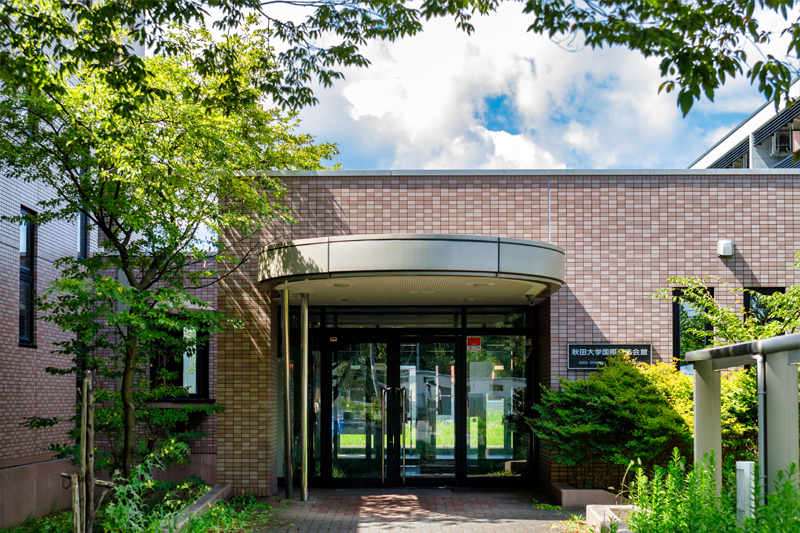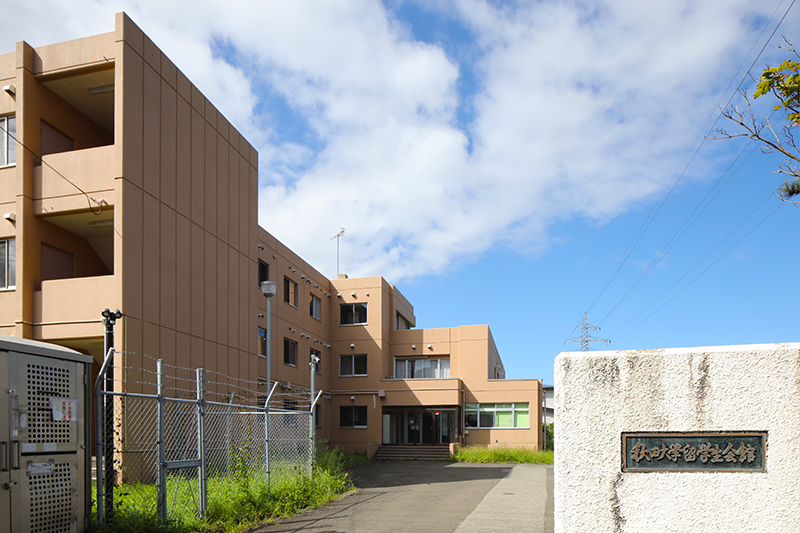Information on Life at Akita University
Dormitory Information
Akita University has two dormitories for international students. International students enrolled at Akita University may apply to move in. However, if the number of applicants exceeds the number of rooms available, a screening process will be conducted to determine who will move in.
International House

All rooms
come with
Wi-Fi!
5-minute walk to the Tegata campus!
| Location | 5-50, Tanaka, Tegata, Akita City, Akita Prefecture, 010-0862, Japan |
|---|---|
| Year of establishment | Building A: 1999 Building B: 2011 |
| Structure | Reinforced concrete, 3 stories |
| Number of rooms | Building A: 10 rooms, Building B: 18 rooms |
| Occupants | International students: Building A, Building B |
| Types of rooms |
Single rooms |
International Student House

All rooms
come with
Wi-Fi!
15-minute walk to the Tegata campus!
| Location | 4, Takada, Hiroomote, Akita City, Akita Prefecture, 010-0041, Japan |
|---|---|
| Year of establishment | 1985 |
| Structure | Reinforced concrete, 3 stories |
| Number of rooms | 27 single rooms, 3 double occupancy rooms for a couple |
| Occupants | International students |
| Types of rooms |
Single room, double occupancy room for a couple |
Procedures for moving in
Eligibility
International students enrolled at Akita University
Application period
Applications are accepted twice a year (scheduled for February and July) through this website.
*For the application period for exchange students (special auditing students and special research students), please refer to the due date of the application form that was sent to you with the application information for the exchange program.
Period of residence
Up to one year (no longer than one year)
| Application period | Length of stay |
|---|---|
| Around February | April 1 to around March 20 of the following year (or earlier or later depending on holidays and national holidays) |
| Around July | Around September 22 to around September 15 of the following year (or earlier or later depending on holidays and national holidays) |
*The moving-out date for exchange students is the last day of the month in which the exchange student program ends.
Selection process
If the number of applicants exceeds the number of available rooms, selections will be made in the following order of priority.
- Privately-financed international students will be given priority over government-sponsored international students in each category.
- In the case of new students (1) to (3), priority will be given to students coming from abroad to Japan in each category.
(1) Exchange students coming under inter university or inter department exchange agreements
(2) New students to regular courses
(3) New students to non-degree programs
(4) Current students in regular courses
(5) Current students in non-degree programs
*If you are a current student, you will be selected based on your history of living in the dormitory and your period of enrollment.
*You cannot apply for the dormitory for international students and the Nishiyachi dormitory (This is a dormitory with Japanese male students. For details, please click here.) at the same time.
Procedures for moving out
Once your move-out date is confirmed, please follow the necessary procedures according to the documents listed below. Please also refer to it for information on the procedures to be taken if you are returning to your country or moving to an apartment.
Procedures to be followed by those moving out of dormitories for international students PDF
Frequently Asked Questions (FAQ)
- How do I apply to live in the dormitory?
- Applications are accepted twice a year. When we start accepting applications, we will notify you on the What's New page.
- Do I need a guarantor when I move in?
- No, you don’t.
- Is it possible to change rooms after moving in?
- In principle, you cannot change your room.
- Is there a parking lot or bicycle parking lot?
- Yes, there is a parking lot and a bicycle parking lot, and they are free of charge. However, prior permission is required for parking cars, while prior permission is not required for bicycles.
- The period of residence is one year, but can I stay longer than this?
- No, the maximum period is one year.
- Is there a curfew?
- There is no curfew, but there is a daily quiet time from 10:00 pm to 7:00 am. Other rules set by the university must also be strictly observed.
- Is it possible to move in earlier than the scheduled moving-in date?
- No, it is not.
- Can I keep a pet in the dormitory?
- No, pets are not allowed in the dormitory.
- Do you have a cleaning service?
- Shared facilities such as the multipurpose hall, kitchen, and laundry room will be cleaned by the contractor, but the personal rooms must be cleaned by the residents themselves.
- Is there a cafeteria in the dormitory?
- No, there is no cafeteria. You can prepare food in your room.


